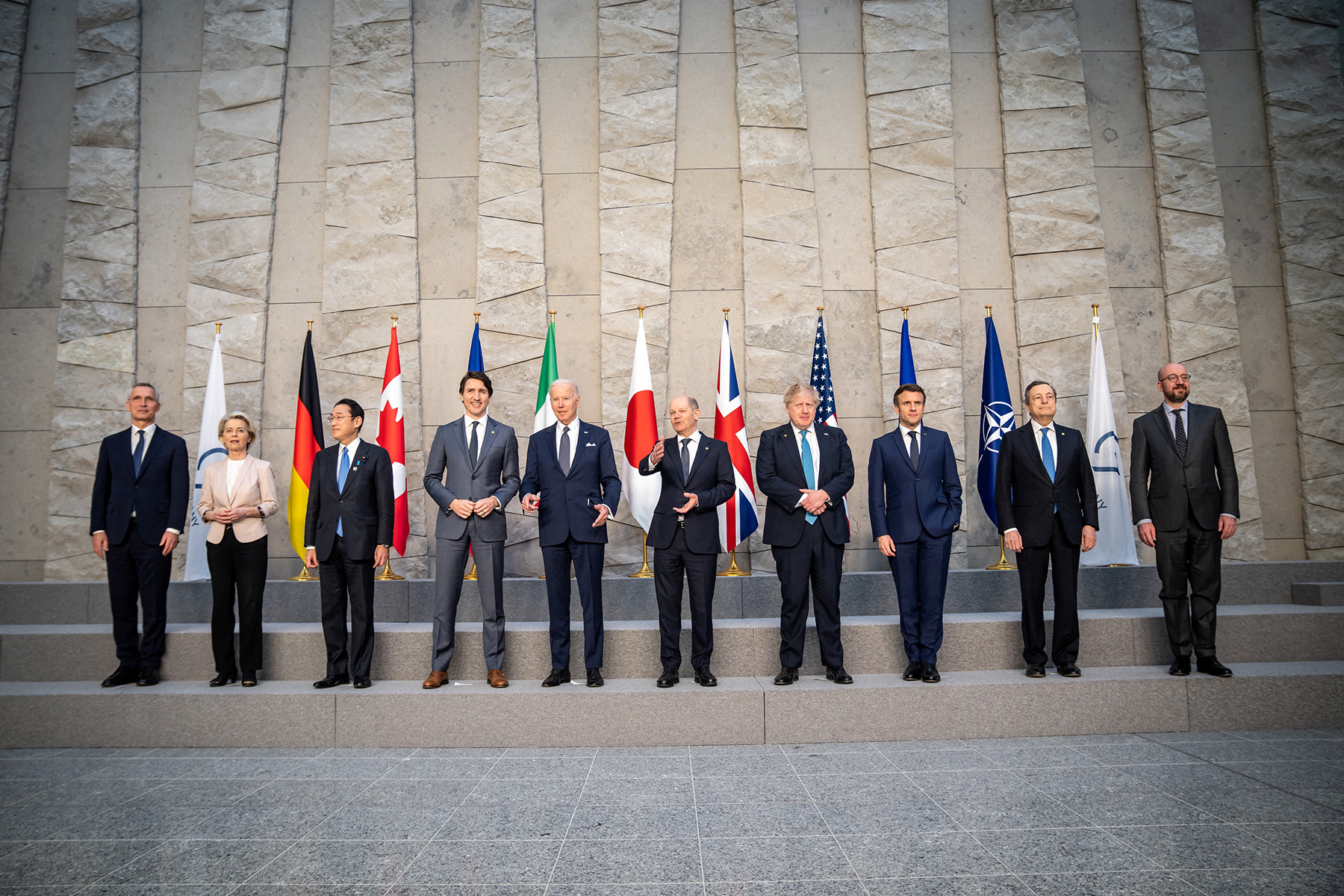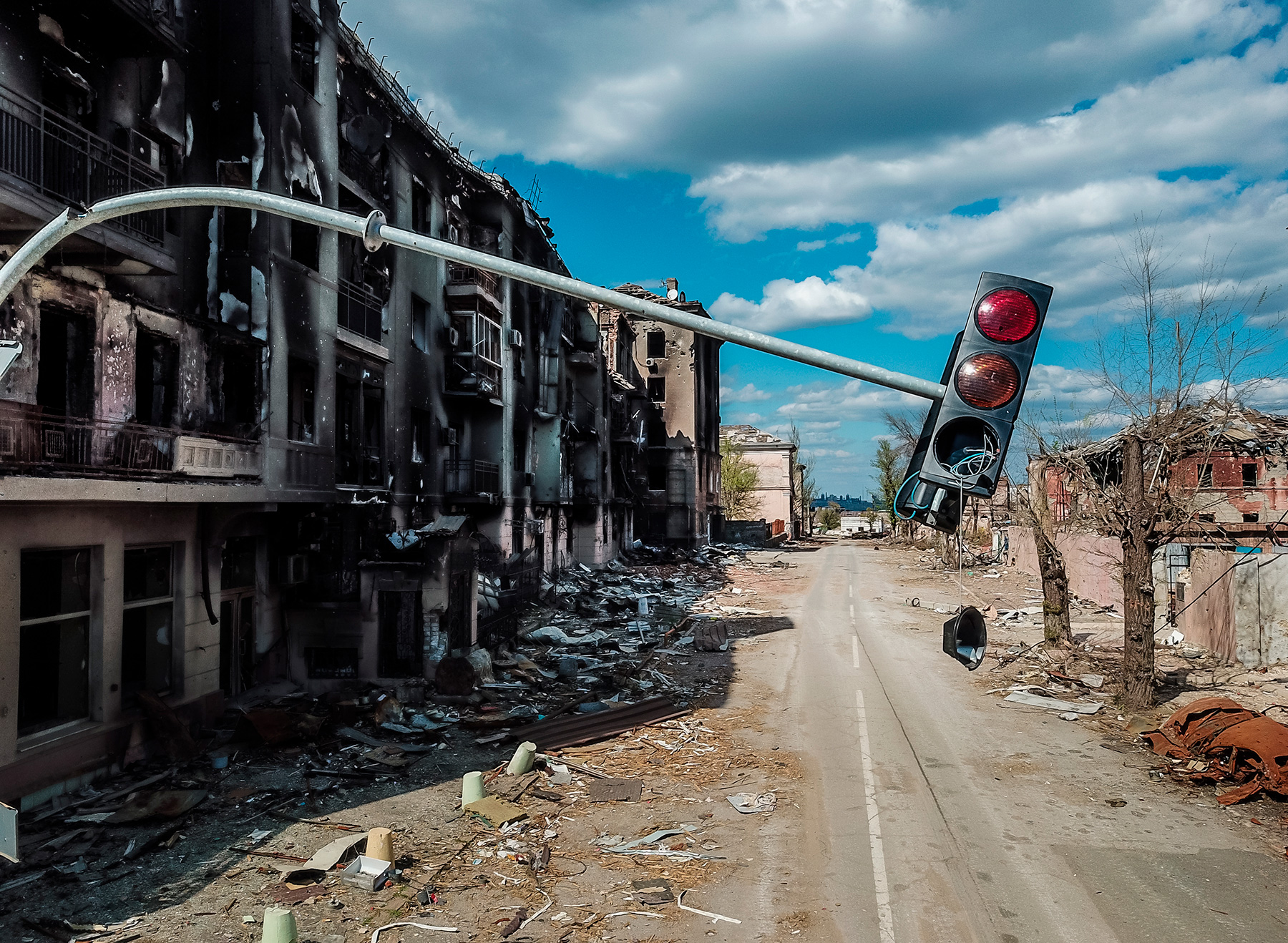The ninth enlargement of NATO is perhaps the most vivid illustration of the ongoing consolidation of the Collective West. A change in the political and military-strategic status of the two formerly neutral countries in Europe not only completely flips the geopolitical situation in Europe’s north upside down, but also brings NATO and the European Union even closer together, pushing the prospect of the EU’s “strategic autonomy” to an uncertain future.
The change from centrifugal to centripetal vector in the Western world occurred at least a year and a half ago with the presidential victory of Joe Biden, a consistent advocate of transatlantic—and, broader, global—unity of liberal democracies. Nevertheless, the events of February 24 gave this consolidation a new—and powerful—impetus. The West was preparing for a similar scenario for a long time: Therefore, the reaction of its leaders, business and influence makers to Moscow’s actions in 2022 was more rapid, coordinated and effective than it was in a similar situation in 2014. The unexpected for many and clearly hasty decisions taken by Helsinki and Stockholm to abandon their traditional neutrality in favor of joining NATO are on a par with other manifestations of the unfolding consolidation of the West.
Obviously, it is the United States that benefits most from this consolidation. In fact, we are witnessing not quite successful attempts to restore the unipolar world of the early 21st century. Nevertheless, the long-term success of this vigorous effort to restore such a world order is far from assured. The United States—much as the West in general—is no longer as economically, politically, or militarily strong as was the case two decades ago. The balance of power in today’s world has appreciably shifted in favor of non-Western countries and regions, and this lasting trend continues to accelerate.
Apparently, another change of the centripetal vector to centrifugal trends in the West will begin with China rather than with Russia. Still, Moscow should not expect a new transatlantic rift to come in the near future. The reality is that Russia will have to prepare for a protracted confrontation with a newly consolidated Collective West, and attempts to play on situational contradictions between the U.S. and Europe are likely to fail.
Much has been said and written about the likely consequences of Finland and Sweden joining NATO. A legion of analysts have already assessed the changing balance of power in the Baltic Sea, the new situation on the long Finnish-Russian land border as well as the possible implications of such NATO’s expansion for the Arctic. Experts are actively discussing the modalities of Helsinki’s and Stockholm’s practical inclusion in the bloc’s current initiatives and upcoming plans, envisioning an anticipated set of political and military responses that Moscow could undertake in the current circumstances.
Without questioning the significance of all these issues, I would like to draw attention to another aspect of what is happening. The ninth enlargement of NATO is perhaps the most vivid illustration of the ongoing consolidation of the Collective West. A change in the political and military-strategic status of the two formerly neutral countries in Europe not only completely flips the geopolitical situation in Europe’s north upside down, but also brings NATO and the European Union even closer together, pushing the prospect of the EU’s “strategic autonomy” to an uncertain future.
The current wave of Western consolidation began far beyond yesterday, not only triggered by the latent conflict in Ukraine entering an acute phase. The change from centrifugal to centripetal vector in the Western world occurred at least a year and a half ago with the presidential victory of Joe Biden, a consistent advocate of transatlantic—and, broader, global—unity of liberal democracies. Moreover, long before the Russian military special operation began, political elites in the West had been pushed toward a rapprochement by their awareness of the growing existential challenge posed by China. The current expansion of the North Atlantic Alliance should be seen against the backdrop of such symbols of the new era as the last year’s establishment of the trilateral AUKUS, the U.S. insistence on institutionalizing the quadrilateral QUAD or the global Summit of Democracies, which was held a few months ago.
Nevertheless, the events of February 24 gave this consolidation a new—and powerful—impetus. The West was preparing for a similar scenario for a long time: Therefore, the reaction of its leaders, business and influence makers to Moscow’s actions in 2022 was more rapid, coordinated and effective than it was in a similar situation in 2014.
The most important decisions on restrictions against Russia were taken literally within a few days. Moreover, the list of countries that joined the U.S. sanctions was much broader than it was eight years ago. The amount of Western military aid to Ukraine is unprecedented in modern history, as is the level of Moscow’s political rejection and even domestic Russophobia, whose cases have been recorded in almost all Western nations. The unexpected for many and clearly hasty decisions taken by Helsinki and Stockholm to abandon their traditional neutrality in favor of joining NATO are on a par with other manifestations of the unfolding consolidation of the West.
Obviously, it is the United States that benefits most from this consolidation. In fact, we are witnessing not quite successful attempts to restore the unipolar world of the early 21st century. Naturally, the shrewd Joe Biden is not a straightforward and simple-minded George W. Bush, which means that the establishment of a new edition of the unipolar world is going on, if I may say so, with medical precision, complying with all the formalities of multilateralism and collective decision-making on central issues of concern. This does not change the point, though: it is about restoring U.S. leadership, albeit in a less explicit form and in a less provocative way.
Nevertheless, the long-term success of this vigorous effort to restore such a world order is far from assured. The United States—much as the West in general—is no longer as economically, politically, or militarily strong as was the case two decades ago. The balance of power in today’s world has appreciably shifted in favor of non-Western countries and regions, and this lasting trend continues to accelerate. The international community has long lost the unbridled piety for liberal economic and socio-political patterns pervasive at the dawn of this century, while no special operation launched by Russia can completely erase the inglorious fiasco of the United States and its allies in Afghanistan from the minds of our contemporaries.
Apparently, another change of the centripetal vector to centrifugal trends in the West will begin with China rather than with Russia. A harbinger of a possible split could be seen in the last year’s Lithuania-China diplomatic conflict, when most European countries chose to stay out of the row between Vilnius and Beijing, limiting themselves to declarative support of their Lithuanian partners. The determination of most European states to lend unconditional support to Washington in event of an escalation in the Taiwan Strait is highly questionable as well.
Sooner or later, divergences, including within the North Atlantic Alliance, will also emerge when it comes to the Russian dossier. Even today, France’s approaches to resolving the Ukrainian crisis markedly differ from those of the United Kingdom or the United States. Once the acute phase of the conflict is over, these discrepancies are likely to deepen, as European members of NATO are objectively more interested in restoring unity of the now divided continent than their overseas ally.
Any landmark event could be an agent of change. For instance, the victory of the new Trump in the U.S. elections in November 2024 or the coming to power in France of a politician like Marine Le Pen. Or, perhaps, a military clash between the U.S. and China in the South China Sea, which European countries will likely try to distance themselves from. Or a new conflict between the East and West Atlantic coasts over trade and economic issues of importance to both sides.
Still, Moscow should not expect a new transatlantic rift to come in the near future. The reality is that Russia will have to prepare for a protracted confrontation with a newly consolidated Collective West, and attempts to play on situational contradictions between the U.S. and Europe are likely to fail. Fortunately, the modern world is much larger than the Collective West, even if it is newly aware of its common historical destiny.






